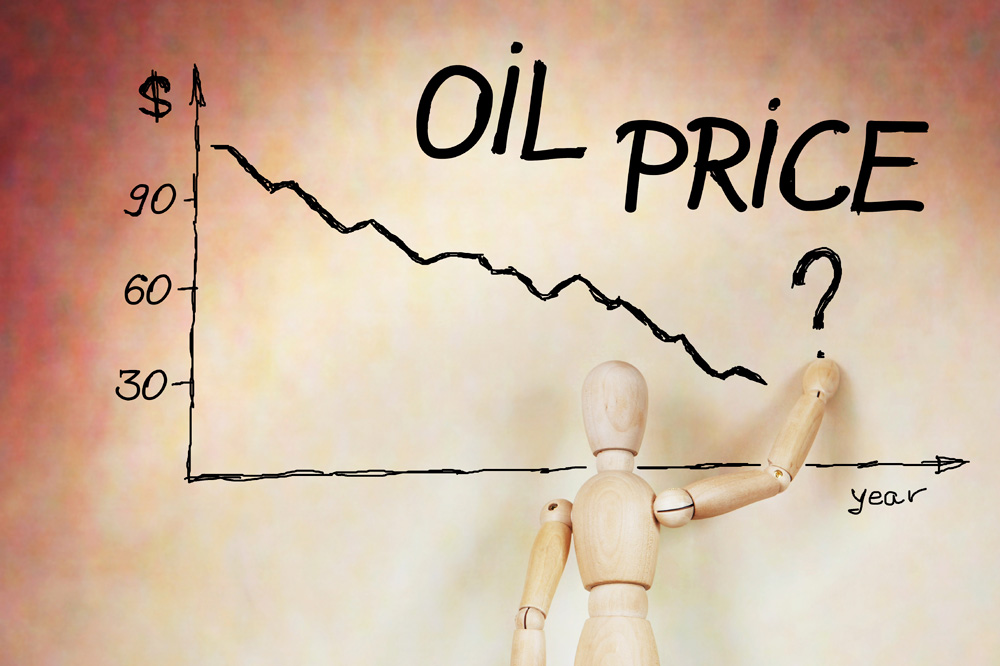 Though a barrel of oil was valued at around $140 in 2008, and over $100 just two years ago, the thought of oil rising back to triple digits seems extraordinarily unlikely in the near future, according to economists.
Though a barrel of oil was valued at around $140 in 2008, and over $100 just two years ago, the thought of oil rising back to triple digits seems extraordinarily unlikely in the near future, according to economists.
Currently sitting at around $30-35 a barrel, the Canadian Chamber of Commerce’s Crystal Ball Report predicts that, with supply set to exceed demand, the price of oil will likely average around $35 per barrel throughout 2016, before rising back to around $55 throughout 2017.
While other bullish predictions have ranged from sub-$20 prices to as high as $70 or $80 by the end of 2016, most others, like those of Morgan Stanley and Shell, predict prices in the low-to-mid $30s until early 2017.
Too many sellers, not enough buyers
Mark Zandi, Chief Economist with Moody’s Analytics, best summed up the main issue when he stated that “It’s difficult to see why oil prices would pick up in 2016. There’s just not enough demand to absorb the production oversupply.”
The first part of the problem is the declining growth in oil demand. While demand for oil had increased by 2.5 to 3 million barrels per day in past years, the International Energy Agency (IEA) reported that it had risen by only 1.8 million barrels per day in 2015.
Because the BRICS countries and many other emerging markets are forecasted to have a weak year in 2016, the IEA predicts that “global demand growth will fall to 1.2 million barrels per day in 2016.”
On the supply side, there is also a forecasted excess of approximately 1.5 million barrels per day.
In November 2015, OPEC announced that it was abolishing its soft production cap of thirty million barrels per day, essentially giving its members permission to flood the market if they so choose.
The Crystal Ball Report also mentions that Iran may be able to sell 500,000 barrels per day once sanctions are fully lifted, and that “countries like Iraq, Venezuela and Nigeria are in such dire financial straits that they simply cannot afford reductions and will be selling as much as possible.”
Market Watch adds that Brazil and Kazakhstan could also be part of a desperate push to produce and sell more oil in 2016 in order to combat domestic economic turmoil.
Though recent rumours have abounded about a potential production freeze by Russia, Saudi Arabia and other major producers, it has so far failed to materialize or have long-term effects on oil prices.
Signs of a reversal?
Part of the reason for the rising supply is that unconventional methods of oil extraction like tar sands and hydraulic fracturing have yielded greater oil supplies than expected.
However, due to the high costs of excavation, many of these methods are not financially sustainable at $30-35 per barrel oil prices, and may slow production or even shut down temporarily or permanently, because of low prices.
With these methods of unconventional extraction forming 25% of all oil extraction in 2014, and forecasted to rise up to 40% by 2040, the oil supply could shrink dramatically in some countries.
Production in the U.S., for example, is forecasted to drop from 9.4 million barrels per day in 2015 to 8.7 million barrels per day in 2016, and 8.5 million per day in 2017.
A recent report also forecasted that nearly 150 oil platforms in the North Sea are scheduled to be decommissioned by 2026, as one in seven barrels there are produced at a loss, and around half of the 22 companies in the area are currently operating with significant deficits.
With lower prices forcing many oil companies to take on more debt, the bankruptcy or closure of one or more major oil companies is not an impossible scenario, and would have major repercussions on oil prices, both in the short and long term.
While oil prices have been notoriously unpredictable over the past several years, these factors suggest that low prices should continue for the next several months, and not rise significantly until 2017.
Are lower oil prices helpful or harmful to your business? How can this information help you adjust your business plan for 2016 and beyond?







disqus comments